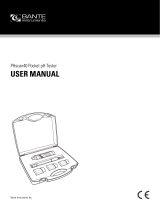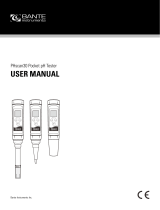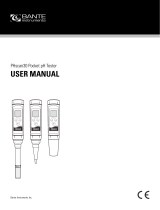10. Icons and Functions
8.1 Calibration points indication:
8.2 Stable Measurement: appears and stays on the screen
8.3 Self-Diagnostic information: Er1, Er2
8.4 Low-Voltage warning: flashes, reminder of battery replacement
8.5 Auto Power-Off in 8 minutes if no operation.
11. Warranty
We warrant this instrument to be free from defects in material and workmanship and agree to
repair or replace free of charge, at option of APERA INSTRUMENTS, LLC, any malfunctioned or
damaged product attributable to responsibility of APERA INSTRUMENTS, LLC for a period of
TWO YEARS (SIX MONTHS for the probe) from the delivery.
This limited warranty does not cover any damages due to:
Transportation, storage, improper use, failure to follow the product instructions or to perform any
preventive maintenance, modifications, combination or use with any products, materials,
processes, systems or other matter not provided or authorized in writing by us, unauthorized
repair, normal wear and tear, or external causes such as accidents, abuse, or other actions or
events beyond our reasonable control.
APERA INSTRUMENTS, LLC
Address: 6656 Busch Blvd, Columbus Ohio 43229
Tel: 1-614-285-3080
Website: aperainst.com














